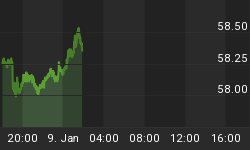Housing Starts 1960-Present

The 13% jump is a huge surge but from hurricane depressed levels. It's not all hurricane related. Starts in the West actually declined as this Census Bureau chart shows.

Regional Variances
The South is the largest region, constituting 48% of the total this month. So while this report is not all hurricane related, there is a noticeable hurricane impact. The next largest region is the West, accounting for 24% of the total.
These regional variants coupled with small sample sizes often provides head-scratching results such as a 42.2% surge in the Northeast even though single-family starts in the Northeast fell 22.4%.
Bond Market Signals
One of the things I watch after these reports is the bond market. The yield on 30-year and 10-year bonds is slightly lower.
The bond market suggests this strength is a bit suspect as was the case in Thursday's Industrial production report. For further discussion, please see Industrial Production Jumps: Another Hurricane Effect?
By Mike "Mish" Shedlock
















